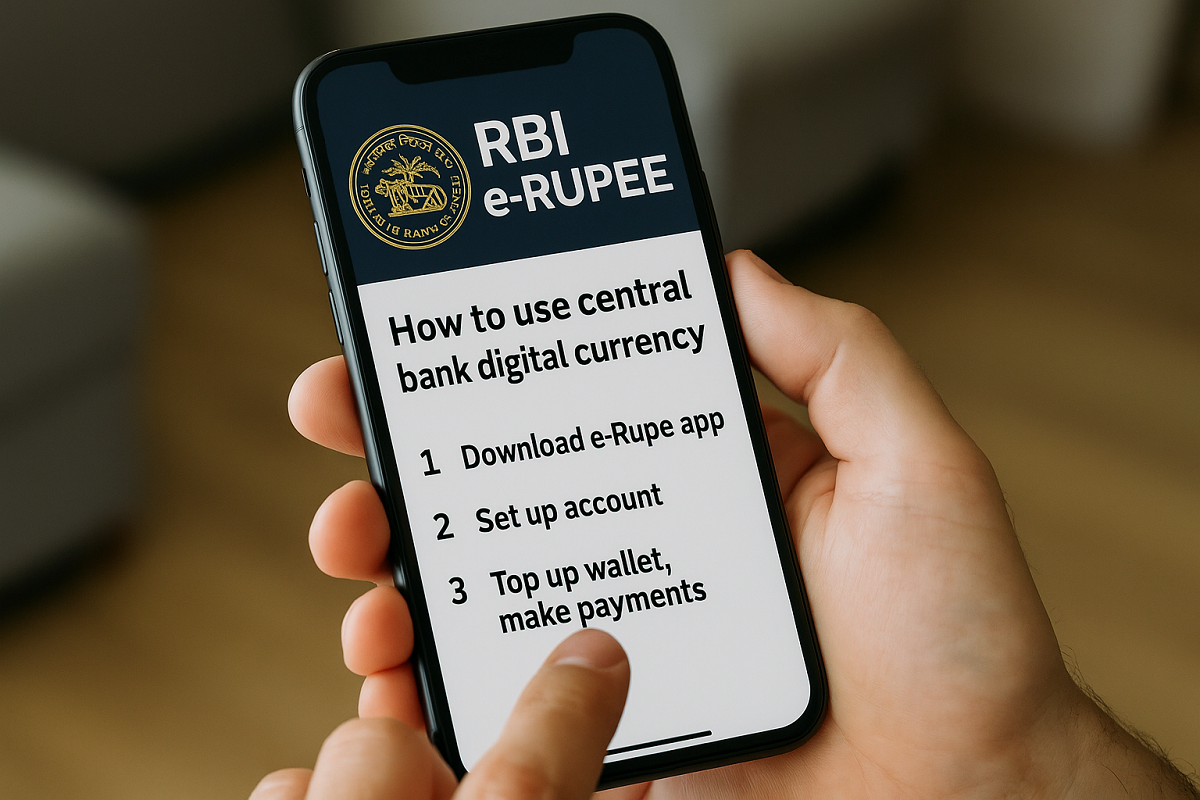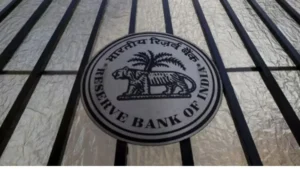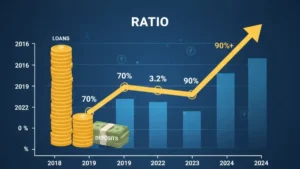Launched in December 2022, the e-rupee, or Central Bank Digital Currency (CBDC) of India, has transitioned from a cautious pilot to a major player in the digital payments landscape. Initially dismissed by critics as a symbolic gesture, the e-rupee has seen exponential growth, with circulation crossing Rs 1,000 crore by March 2025, as per the RBI’s annual report.
This evolution is a watershed moment in India’s fintech journey, with transformative implications for how digital money is issued, used, and taxed.
The Journey of e-Rupee: From Pilot to Pan-India Rollout
From Experimental to Essential
The e-rupee started as a pilot program in December 2022, targeting a closed user group comprising merchant banks and selected retail customers. Over just three years, this initiative expanded nationwide. By March 2025, the retail user base had grown to over 60 lakh users, and participation extended to 17 major banks.
Dual Format: Wholesale and Retail Use Cases
The RBI introduced the e-rupee in two formats:
-
Wholesale CBDC (CBDC-W): Initially used for settling secondary market transactions in government securities.
-
Retail CBDC (CBDC-R): Designed for the general public, focusing on everyday transactions.
This structured approach allowed the RBI to test its functionality while maintaining system stability.
What Is e-Rupee and How Does It Work?
Hard Cash in Digital Form
The e-rupee is defined by the Reserve Bank of India as a sovereign digital currency, equivalent to physical currency but in a tokenized digital format. It maintains the key features of paper money, such as being legal tender, issued by the RBI, and distributed via banks.
How Is It Different from UPI or Online Banking?
Unlike digital banking transactions (e.g., NEFT, RTGS, UPI), the e-rupee is not account-based. Instead, it is a digital token, fungible, and can be stored in a digital wallet on your mobile device, even without a bank account. This gives it the feel of physical cash, with a layer of privacy and anonymity in peer-to-peer payments.
Denominations and Wallets
The e-rupee is issued in standard currency denominations (like Rs 10, Rs 100, Rs 500, etc.). Users can transact through digital wallets offered by participating banks, which function similarly to cash wallets rather than savings accounts.
Important: Unlike your savings bank balance, e-rupee does not earn interest.
Tax Treatment of e-Rupee: A Currency, Not a Commodity
Not an Investment or Asset
One of the most defining features of the e-rupee is its tax neutrality. As it is a sovereign currency and not a tradable asset, it does not fall under the definition of a ‘capital asset’ under Section 2(14) of the Income Tax Act. It is also excluded from the definition of ‘virtual digital asset’ (VDA) under Section 2(47A).
GST and Income Tax Exemption
The Goods and Services Tax (GST) framework excludes currency from the definition of goods or services, and hence, transactions made using the e-rupee are not subject to GST.
There is no capital gains tax on the use of e-rupee, and it cannot be traded like cryptocurrency, stocks, or mutual funds.
Potential Tax Pitfalls: Treated Like Physical Cash?
Despite its classification as digital currency, the e-rupee shares one important trait with physical cash: its anonymity and token-based nature. This similarity has raised serious concerns among tax professionals.
Possible Misuse Under Current Tax Laws
Several sections of the Income Tax Act, such as Sections 269SS, 269ST, and 271DA, place restrictions and penalties on high-value cash transactions. If the e-rupee is not explicitly recognized as a valid substitute for these payments (like ECS, cheques, or UPI), then it may be treated as hard cash under the law.
This opens up the possibility that using e-rupee for certain high-value or business-related payments may trigger penalties, just like violating the cash limits in the traditional system.
High-Risk Use Cases to Avoid
Using e-rupee for the following types of transactions may carry cash-equivalent penalties:
- Real estate purchases above Rs 20,000 in cash-equivalent mode
- Donations or loans exceeding permissible limits under Section 269SS or 269T
- Business expenses or payments over Rs 10,000 to a single party
- Transactions meant to be done via electronic clearing systems
Until the Income Tax Department issues clear guidance, the risk of penalty remains real for users who treat the e-rupee as just another digital payment mode.
The Need for Policy and Stakeholder Alignment
The Reserve Bank of India has taken a progressive step by bringing sovereign currency into the digital realm, but for the e-rupee to be widely accepted and integrated, there must be uniform understanding among all stakeholders—especially the tax authorities.
Regulatory Clarity is Critical
If the government wants the e-rupee to replace physical cash and reduce black money, it must ensure:
- Clarity in tax rules around its usage
- Updates to the Income Tax Act to recognize e-rupee as an acceptable mode of payment
- Public awareness campaigns about its benefits and limitations



 SEBI Proposes 30-Day Lag on Market Price...
SEBI Proposes 30-Day Lag on Market Price...
 Delhi Government Brings Finances Under R...
Delhi Government Brings Finances Under R...
 Rising Loan-to-Deposit Ratios Put Pressu...
Rising Loan-to-Deposit Ratios Put Pressu...







